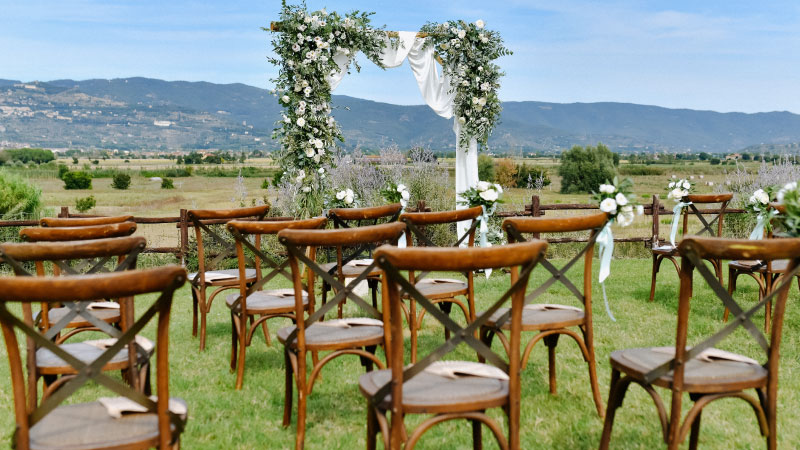As sustainability becomes a priority in various industries, the event sector is no exception. Choosing eco-friendly venues is a pivotal step towards hosting green events. This article explores the importance of eco-friendly venues, their features, benefits, and how to select the right one for your event.

Eco-friendly venues minimize the environmental impact of events. They incorporate sustainable practices in their operations, reducing energy consumption, waste, and water use. Selecting such venues reflects an organization’s commitment to sustainability and can enhance the reputation of both the event and the organizers.
Key Features of Eco-Friendly Venues
Diagram: Key Features of Eco-Friendly Venues
| Feature | Description |
|---|---|
| Energy Efficiency | Uses energy-efficient lighting, heating, and cooling systems |
| Renewable Energy Sources | Utilizes solar, wind, or other renewable energy sources |
| Water Conservation | Implements water-saving fixtures and recycling systems |
| Waste Management | Provides comprehensive recycling and composting programs |
| Sustainable Materials | Uses recycled or sustainably sourced materials for construction and decor |
| Green Certifications | Certified by organizations like LEED or BREEAM |
Energy Efficiency
Diagram: Energy-Efficient Systems
| System | Benefits |
|---|---|
| LED Lighting | Reduces energy consumption compared to traditional bulbs |
| HVAC Systems | Energy-efficient heating, ventilation, and air conditioning |
| Smart Controls | Automated systems to optimize energy use |
Energy-efficient venues use LED lighting, smart HVAC systems, and automated controls to minimize energy consumption. These systems not only reduce the carbon footprint but also lower operating costs.
Renewable Energy Sources
Diagram: Renewable Energy Sources
| Energy Source | Description |
|---|---|
| Solar Panels | Converts sunlight into electricity |
| Wind Turbines | Generates power from wind |
| Geothermal | Uses Earth’s heat for heating and cooling |
Venues that use renewable energy sources like solar panels, wind turbines, and geothermal systems significantly reduce their reliance on fossil fuels, making them more sustainable.

Water Conservation
Diagram: Water Conservation Practices
| Practice | Description |
|---|---|
| Low-Flow Fixtures | Reduces water usage in restrooms and kitchens |
| Rainwater Harvesting | Collects and reuses rainwater for irrigation and other uses |
| Greywater Recycling | Reuses water from sinks and showers for non-potable uses |
Water conservation is critical for sustainable venues. Implementing low-flow fixtures, rainwater harvesting systems, and greywater recycling helps minimize water use.
Waste Management
Diagram: Waste Management Systems
| System | Description |
|---|---|
| Recycling Stations | Separate bins for paper, plastic, glass, and metal |
| Composting Programs | Processes organic waste into compost |
| Waste Audits | Regular audits to monitor and improve waste management |
Effective waste management systems include recycling stations, composting programs, and regular waste audits. These practices reduce the amount of waste sent to landfills and promote recycling and composting.
Sustainable Materials
Diagram: Sustainable Materials Use
| Material | Description |
|---|---|
| Recycled Materials | Uses recycled content for construction and decor |
| Sustainably Sourced | Ensures materials are sourced responsibly |
| Eco-Friendly Decor | Uses biodegradable or reusable decor items |
Venues built or decorated with recycled, sustainably sourced, and eco-friendly materials have a lower environmental impact. These materials reduce the demand for virgin resources and often have a smaller carbon footprint.
Green Certifications
Diagram: Common Green Certifications
| Certification | Description |
|---|---|
| LEED | Leadership in Energy and Environmental Design |
| BREEAM | Building Research Establishment Environmental Assessment Method |
| Green Globe | Certification for sustainable tourism |
Green certifications like LEED, BREEAM, and Green Globe indicate that a venue meets high standards for sustainability. These certifications provide assurance that the venue operates with minimal environmental impact.
Benefits of Choosing Eco-Friendly Venues
Diagram: Benefits of Eco-Friendly Venues
| Benefit | Description |
|---|---|
| Environmental Impact | Reduces the carbon footprint and conserves resources |
| Cost Savings | Lower operating costs due to energy and water efficiency |
| Brand Image | Enhances reputation as a socially responsible organization |
| Regulatory Compliance | Meets or exceeds environmental regulations |
Choosing eco-friendly venues offers numerous benefits, including reduced environmental impact, cost savings, enhanced brand image, and compliance with environmental regulations.
How to Select an Eco-Friendly Venue
Diagram: Steps to Select an Eco-Friendly Venue
| Step | Description |
|---|---|
| Research | Identify venues with sustainable practices |
| Site Visit | Tour the venue to see sustainability features in action |
| Ask Questions | Inquire about specific green practices and certifications |
| Evaluate Options | Compare venues based on sustainability and other criteria |
| Make a Decision | Choose the venue that best meets your sustainability goals |
Selecting an eco-friendly venue involves thorough research, site visits, asking detailed questions, evaluating options, and making an informed decision.

- Research: Look for venues that advertise their commitment to sustainability. Use online resources and recommendations to compile a list of potential venues.
- Site Visit: Visit the venues to observe their sustainability features firsthand. Take note of energy-efficient lighting, water-saving fixtures, waste management systems, and the use of renewable energy.
- Ask Questions: Inquire about the venue’s specific green practices, such as their recycling programs, energy sources, and certifications. Ask for documentation or examples of their sustainable efforts.
- Evaluate Options: Compare the venues based on their sustainability features, location, cost, and overall suitability for your event. Consider the long-term benefits of choosing a greener venue.
- Make a Decision: Choose the venue that aligns best with your sustainability goals and meets your event requirements.
Eco-friendly venues play a crucial role in reducing the environmental impact of events. By selecting venues that prioritize energy efficiency, renewable energy, water conservation, waste management, and sustainable materials, event organizers can host greener events. The benefits of choosing eco-friendly venues extend beyond environmental impact, including cost savings, enhanced brand image, and regulatory compliance.
Related Items and Further Reading
- Books
- Sustainable Event Management: A Practical Guide by Meegan Jones
- Green Events and Green Tourism: An International Guide to Good Practice by Peter Roberts
- Websites
- Green Event Hub (greeneventhub.com)
- Sustainable Event Alliance (sustainableeventalliance.org)
- Tools and Resources
- Carbon Footprint Calculator (carbonfootprint.com)
- Event Sustainability Reporting Tools (Global Reporting Initiative)
By following these guidelines and utilizing the resources provided, event organizers can make informed decisions and contribute to a more sustainable future.




